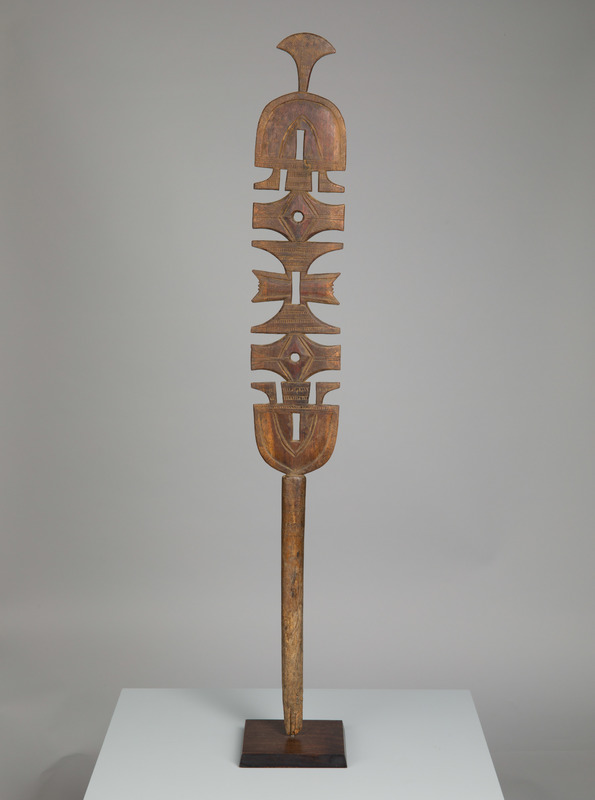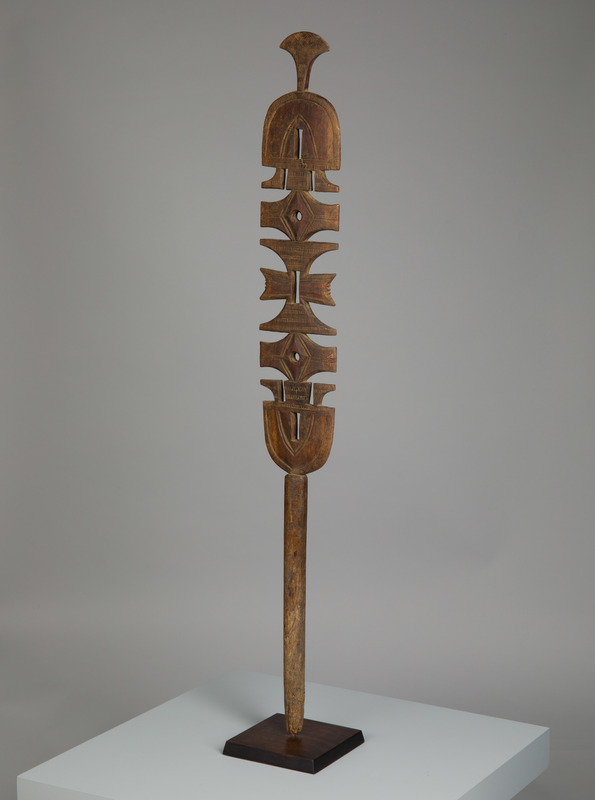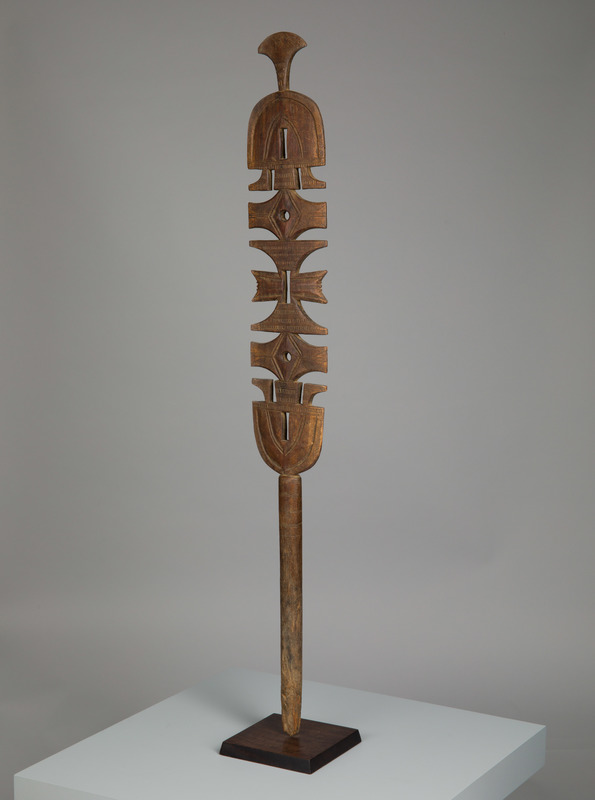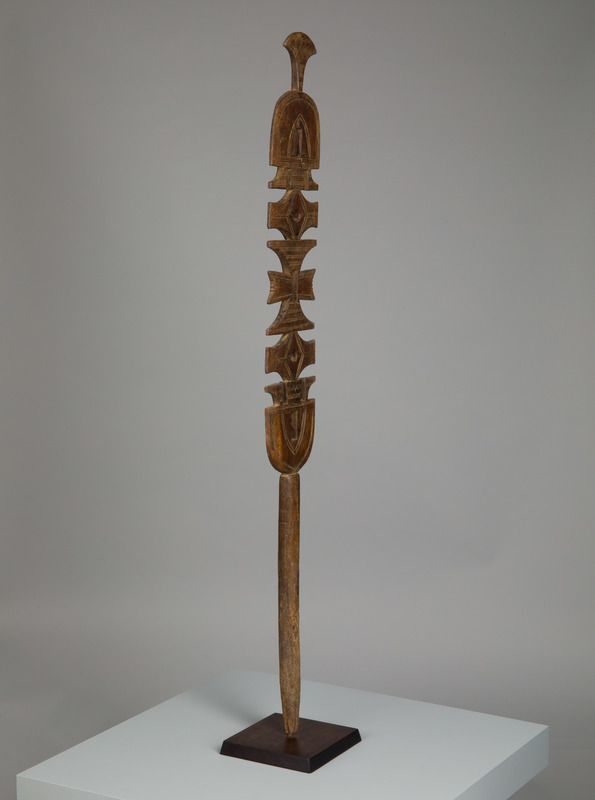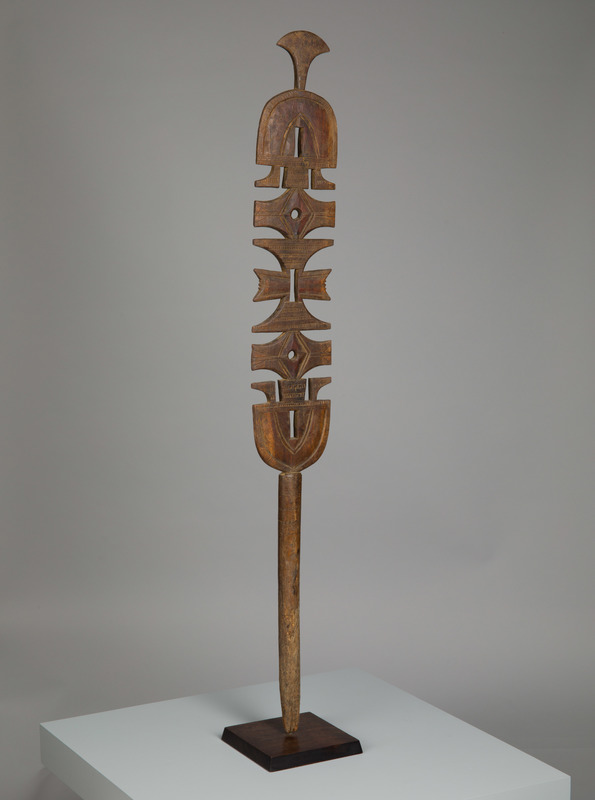Catalogue 25
Decorative Pole, ehel
Tuareg prople, Niger or Mali
20th century
Wood; 41 1/2 x 5 1/2 x 1/2 inches (105 x 14 x 1.3 cm)
Collection of Allen and Barbara Davis
The Tuareg are a loose confederation of groups of pastoral nomads, settled agriculturalists, and today city dwellers who live in Niger and Mali. They call themselves Kel Tamaschek (people who speak Tamaschek). Artisans, men and women, are part of a social group known as inadan (sing. edan). Men (inadan) work in wood and metal and women (tinadan) in leather. The inadan once made most of the goods necessary for the nomadic life. Men carved wooden bowls, spoons, bowl stands, and tent poles. They made saddles, as well as silver jewelry, tools, knives and swords. Women made elaborately decorated leather bags, cushions, and saddle blankets. Because the Tuareg moved with their herds, their tents and all their household furnishings had to be portable in order to be packed on camels and transported to a new campsite. While household furnishings might be few in number, much care and attention is paid to the selection of materials and their decoration.
The Tuareg tent (ehen) is the symbol of marriage and family and was once central to Tuareg lives. The tent and other associated household goods are given to a bride by her family, while the groom provides her with the tent poles (igem). The tent covering is made of animal hides. The decorative interior poles (ehel), like this example, are incised with geometric designs and used to hold up the woven reed and leather mats that line the interior of the tent. They also offer supports to hang leather bags and clothing. The tent and its structural components and furnishings belong to the wife, who makes and remakes the domestic space as the family moves throughout the year. Tents are organized into a male and a female space, delimited by a reed and leather windscreen. The marriage bed and the hearth are placed in the center. The husband keeps his weapons, tools, saddles, and clothing on his side, and the wife keeps her clothes, leather bags, saddle, and cooking implements on her side. Both structural and decorative, the ehel are intended to be prestige pieces, and their intricate carving and embellishments indicate the high socioeconomic status of their female owners.
MJA
References
Nicolaisen, Johannes, and Ida Nicolaisen. 1997. The Pastoral Tuareg: Ecology, Culture, and Society. 2 vols. New York: Thames and Hudson.
Prussin, Labelle. 1995. African Nomadic Art and Architecture: Space, Place, and Gender. Washington: Smithsonian Institution Press.
Rasmussen, Susan J. 1996. “The Tent as Cultural Symbol and Field Site: Social and Symbolic Space, Topos, and Authority in a Tuareg Community.” Anthropological Quarterly 69 (1): 14–26.
Seligman, Thomas K., and Kristyne Loughran. 2006. Art of Being Tuareg: Sahara Nomads in a Modern World. Los Angeles: Iris and B. Gerald Cantor Center for Visual Arts at Stanford University.

